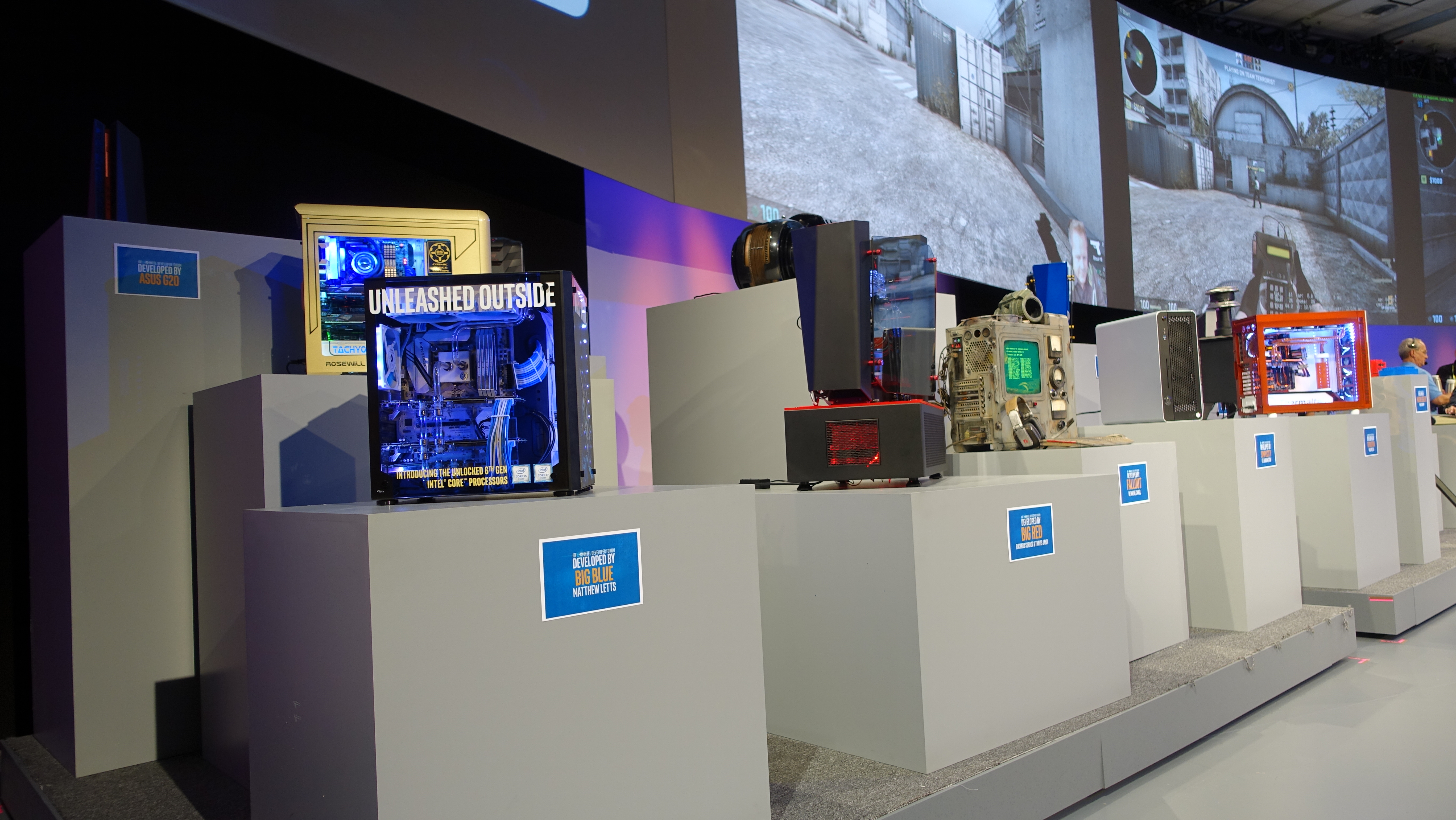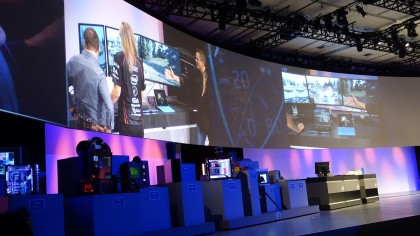Intel appeals to gamers with Skylake's improved Iris graphics
Smaller, faster and better

Over $34 billion are spent on PC games this year. Worldwide, there are 1.8 billion gamers, of which 1.2 billion consider themselves to be active gamers. Active gamers pay for a new game each month, and they upgrade their systems every two to three years on average, compared with PC users who hold onto their PCs for around six years.
These numbers are important to Intel, which hopes that users will upgrade to its Sixth Generation Skylake processors. At IDF 2015, Doug Fisher, Senior Vice President and General Manager of Intel's Software and Services Group, and Kirk Skaugen, Senior Vice President and General Manager of Intel Client Computing Group, showed off key features of Intel's hardware that make it appealing to gamers.
Not only does Skylake provide CPU improvements over the previous Fifth Generation Broadwell architecture, but Fisher and Skaugen pointed out that Skylake will also come with improved graphics capabilities with Intel's integrated Iris and Iris Pro.
How gaming is beneficial
Gaming is not just about play. Gamification in schools can help motivate students and encourage learning. 74% of teachers use games in curriculum, according to Fisher, and games can help the elderly keep their minds active.
Gaming also affects non-gamers as well. Doctors who spend on average three hours a week playing games make 37% fewer errors and operate 27% faster in surgeries. Fisher notes that games help refine motor skills.
The hardware
Intel announced its Skylake processors at Computex, which comes with an overclocked K SKU for gamers. These performance machines also comes with Intel's integrated Iris and Iris Pro graphics. Overclocked systems come can go in excess of 4GHz with multi-core setups.
On stage, Skaugen showed off the power of Skylake, which not only can handle 4K UHD video output at 60 frames per second, but can do so on up to three 4K displays. Iris graphics can pump video out to three 4K monitors simultaneously, so gamers will be able to create a multi-monitor setup with Intel's integrated graphics.
Are you a pro? Subscribe to our newsletter
Sign up to the TechRadar Pro newsletter to get all the top news, opinion, features and guidance your business needs to succeed!

For professional users, the improved CPU and GPU performance of Skylake means that you can also setup workstations with multiple screens. But beyond that, Intel is pushing performance into smaller packages so that slim devices, like a prototype Microsoft Surface Pro tablet with Skylake, can also push out 4K video to three displays. This brings the power of a desktop down to even mobile devices.
Performance will also be improved with Intel's Optane memory, which is based on the previously announced 3D XPoint memory architecture. Optane will hit SSDs next year, said CEO Brian Krzanich in his IDF keynote Tuesday morning, providing speeds up to seven times that of NAND storage.
Optane's fast speeds will allow games to look more realistic with faster refresh rates, and enterprise customers can also perform real-time analytics on larger data sets.
Personalized and immersive gaming
With its RealSense 3D camera, Intel wants the gaming experience to be personalized. RealSense can be used for the front-facing camera on tablets and phones to enable gesture input as well as on the rear of the camera to scan objects for simulation.
As part of his demonstration, Skaugen showed that you can use the rear camera to scan yourself. It takes Skylake about two to three minutes to render your scanned image, but once this is completed, you can insert yourself into the game to create a highly personalized gamin experience.
In another example, objects are scanned into the game. For instance, healing objects and health objects in the game, which are depicted as first aid kids in some current games, can be replaced with whatever you choose. In the Intel demo, a koala bear was scanned and used as a healing object in a game that is developed with China-based Tencent.
- Read our Intel Skylake review